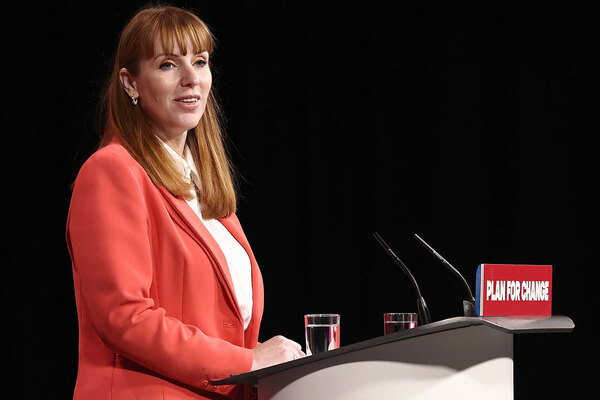You are viewing 1 of your 1 free articles
Grenfell fire barrier supplier wrote report covering use on tower nine days after fire
The fire barriers used on Grenfell Tower had only ever been tested in a narrower gap than the one they were required to fit on the tower, with an ‘extended field of application’ report produced nine days after the blaze.

Today the Grenfell Tower Inquiry heard evidence from Christopher Mort, technical officer for fire at barrier manufacturer Siderise, discussing the testing and marketing of the barriers.
The inquiry heard that while the barriers were tested to a maximum gap of 300mm, they were sold for use in a cavity on Grenfell Tower that ranged from between 326mm and 425mm.
On 23 June 2017, nine days after a fire ripped through the cladding and killed 72 people, Mr Mort signed an ‘extended field of application report’ saying the products were suitable for gaps of up to 425mm.
“Can you explain why it was that an extended application assessment was carried out at this time on 23 June 2017? What had prompted it?” asked inquiry counsel Kate Grange QC.
“It was just requested from the business,” said Mr Mort. Pressed on whether this was done in response to the blaze, he said he “could not say”
“Can you explain how Siderise were able to supply cavity barriers for voids between 326mm and 425mm at Grenfell Tower when it appears that no testing to those void widths or any extended application assessments had been undertaken at that time?” asked Ms Grange.
Mr Mort explained that these assessments had previously been undertaken but had not been formally documented in the way he had done after the fire. He said subsequent testing has validated this view.
Mr Mort was also shown marketing material that was provided to Grenfell’s cladding sub-contractor Harley Facades and claimed that a testing house had deemed the product “represents a practical fire cavity barrier solution for this particularly demanding condition”.
But he was shown reports from the test house, Warringtonfire, which contained no such statement – and in fact had a specific caveat saying the report “did not consider” fire spread that may occur as a result of a failing rainscreen system.
“Can you agree that this statement… is certainly not something we see in any of the test reports?” Ms Grange asked.
“I can agree it doesn’t come up in test reports but I can’t agree that it hasn’t been discussed in other ways because I was not party to all the discussions,” Mr Mort replied.
Ms Grange said no such statement had been found written in any of the documents disclosed to the inquiry.
Much of the day’s evidence concerned the testing of ‘open-state’ cavity barriers, which are designed specifically for rainscreen cavity barriers and leave a small gap to allow the ventilation and draining of moisture but are designed to expand and completely fill the space in the event of a fire.
Testing these products was challenging because the traditional tests would automatically fail a product that left gaps.
As a solution, Siderise began “ad hoc” testing of intumescent cavity barriers and taking a range of data from these tests.
Ms Grange asked: “Is it your understanding that all of the testing houses didn’t consider the British standards to be adequate for testing of open-state cavity barriers?”
“Yes,” replied Mr Mort.
Siderise worked with the industry to publish guidance for the testing of ‘open-state’ cavity barriers, which involved suspending it in between two concrete blocks and subjecting it to a furnace fire.
This test allowed five minutes at the start for the intumescent barrier to close the space and stop the spread of flame, despite other Siderise documents suggesting this should happen within two minutes.
Mr Mort also accepted that the use of two concrete blocks is also substantially different to a rainscreen cladding system, where the deformation of a cladding panel in a fire may cause the system to fail.
He said Siderise had asked the facade industry for partners to carry out further tests on cladding systems but did not attract much interest.
“In circumstances where the need for further testing of those systems was identified, why did Siderise feel it was appropriate to be marketing these open−state cavity barriers in rainscreen systems?” Ms Grange asked.
“They had been tested on a few occasions in rainscreen systems, and again I would say we openly requested from industry to partner with us in testing and nobody came forward. We are no experts in building rainscreens. You need the expert partners in other parts of the industry to come forward to the table to assist,” Mr Mort replied.
Siderise provided the cavity barriers for the tests by insulation manufacturer Celotex in February and March 2014.
The inquiry has previously heard that Celotex, the company that provided the majority of the insulation for Grenfell Tower, used secret magnesium oxide boards for the second of these tests to help it pass.
Mr Mort denied any knowledge that this had been done.
The inquiry continues with further evidence from Mr Mort tomorrow.
Sign up for our weekly Grenfell Inquiry newsletter
Each week we send out a newsletter rounding up the key news from the Grenfell Inquiry, along with the headlines from the week
Already have an account? Click here to manage your newsletters












